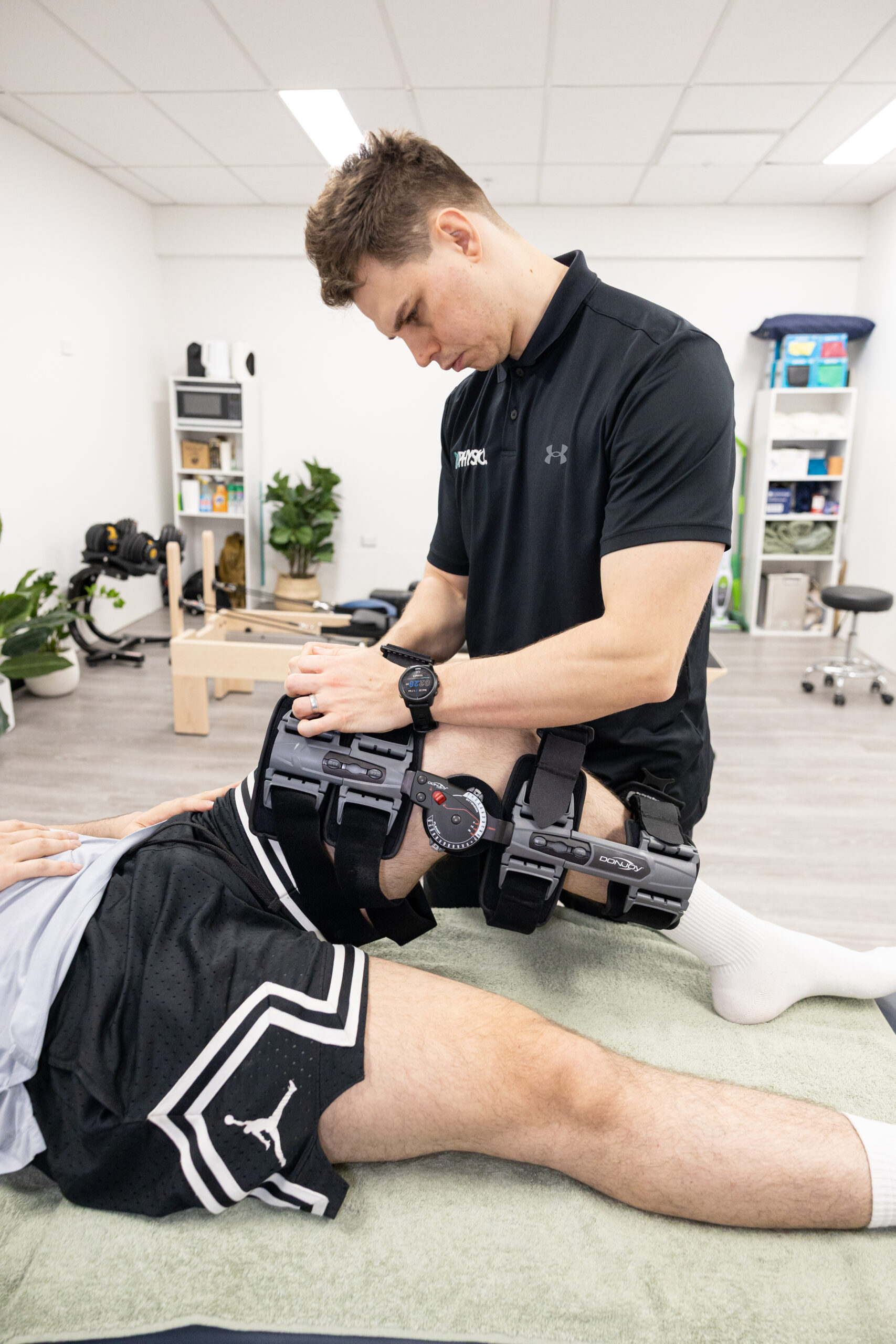
59) Anterior Cruciate Ligament Injury With the Cross Bracing Protocol
Think Anterior Cruciate Ligament injury automatically means surgery? Not always. The Cross Bracing Protocol is a groundbreaking approach that uses structured bracing and physiotherapy to promote natural healing of the Anterior Cruciate Ligament. In this blog, we’ll break down the full recovery journey, share a patient success story, and explain how this evidence-based method could help you avoid surgery altogether.

What Is the Cross Bracing Protocol?
Traditionally, Anterior Cruciate Ligament ruptures were managed with either surgery or conservative physiotherapy. The Cross Bracing Protocol (CBP) is different. It involves using a knee brace locked in flexion in the early stages after injury to encourage the Anterior Cruciate Ligament to “scar down” and heal, while following a carefully staged physiotherapy program.
Developed in Australia, this method is gaining global attention for its potential to allow the Anterior Cruiciate Ligament to heal naturally—something once thought impossible.

Key Principles of the Cross Bracing Protocol
- Brace in Flexion – The knee is initially locked at 90° flexion for 4 weeks, minimising stress on the healing ligament.
- Strict Range Progression – Knee range of motion is gradually reintroduced in small, controlled steps over 12 weeks.
- Muscle Preservation – Focused exercises prevent atrophy of quads, hamstrings, calves, and hips.
- DVT Prevention – Early use of calf exercises and short-term anticoagulation medication.
- Progressive Loading – Carefully staged strengthening, balance, and gait retraining from weeks 5 onwards.
- Return to Sport Criteria – Objective testing (strength symmetry, hop tests, SEBT) before clearance at 9–12 months.
Week-by-Week Breakdown
Weeks 1–4
- Brace locked at 90°, non-weight bearing with crutches.
- Focus: Anterior Cruciate Ligament healing, swelling control, muscle activation.
- Exercises: calf raises, quad/hamstring co-contractions, hip work, glute bridges.
- No NSAIDs or aspiration injections.
Weeks 5–6
- Brace gradually adjusted (60°–90° in week 5, 45°–90° in week 6).
- Still non-weight bearing.
- Begin wall squats, weight transfers, leg press within limits.
Weeks 7–9
- Transition to partial then full weight bearing.
- ROM increases to full flexion.
- Begin stationary bike, gait retraining, and progressive strength work (squats, lunges, deadlifts).
Weeks 10–12
- Unrestricted ROM in brace.
- Full weight bearing.
- Progress to single-leg squats, dynamic balance, and higher-level strengthening.
- Follow-up MRI and specialist review at end of week 12.
Weeks 13–16
- Brace removed (may use for high-risk activities).
- Build towards jogging and light skipping.
- Criteria-based return to running after 16 weeks if strength >80% of the opposite leg.
Weeks 17–26+
- Gradual return to faster running, agility drills, multidirectional hopping.
- Return to play testing at 9–12 months, including hop tests, SEBT, and strength benchmarks.

Why Choose the Cross Bracing Protocol?
- Evidence-based: Studies show potential for Anterior Cruciate Ligament healing without reconstruction.
- Avoid surgery risks: No anaesthesia, no graft harvesting, no surgical complications.
- Structured and safe: Clear week-by-week plan with physiotherapist guidance.
- Long-term outcomes: Patients report improved stability, function, and confidence.
For other options, please read our other blog HERE on ACL treatment.

Example From Our Clinic – Mark’s Journey
We recently saw Mark, a 34-year-old recreational soccer player, who suffered a complete Anterior Cruciate Ligament tear. Instead of immediate surgery, he committed to the Cross Bracing Protocol under our supervision.
The first month was tough—strict brace use at 90° and no weight bearing—but with regular physiotherapy, he stayed motivated. By week 9, he was walking confidently without crutches, and by 12 weeks, his MRI showed signs of Anterior Cruciate Ligament healing.
Fast forward 10 months: Mark returned to playing casual soccer with no instability, proving that with dedication and the right guidance, surgery isn’t always the only answer.
Benefits of the Protocol Over Surgery
- Reduced costs and downtime.
- Lower risk of complications.
- Encourages natural ligament healing.
- Individualised progression with physiotherapist support.
Who Is This Best Suited For?
The Cross Bracing Protocol is ideal for:
- Adults with recent ACL tears willing to commit to strict bracing.
- Patients motivated to follow structured rehab and physiotherapy.
- People prioritising long-term knee health and avoiding surgery.
It may not be suitable for everyone—especially high-level pivoting athletes or those with combined ligament damage—but for many, it’s a life-changing option.
Takeaway Message
ACL injuries don’t always mean surgery. The Cross Bracing Protocol offers a structured, research-driven alternative that combines bracing, progressive physiotherapy, and careful monitoring. With the right support, you may regain knee strength and stability naturally.
References



